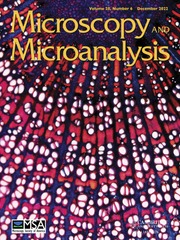No CrossRef data available.
Article contents
The Role of Microscopy in the Study of Chemical Polymorphism
Published online by Cambridge University Press: 02 July 2020
Extract
Chemical polymorphism refers to the ability of compounds to exist in different solid state forms. In general, these differ solely in their arrangement in space (i.e., their crystal form). Polymorphs typically have different solid state properties such as melting point, solubility, density, etc. They also commonly exhibit distinctive optical properties such as refractive index, extinction position, optic sign and optic angle. The choice of polymorph can be an important consideration in the drug development process if the solid state properties have wide differences. Further, it is generally desirable to develop the polymorph which is stable at room temperature and pressure, since metastable forms convert spontaneously to the stable ones, albeit often at a very slow rate. Optical, thermal and scanning electron microscopy each play important roles in the study of chemical polymorphism.
Optical microscopy, and more specifically polarized light microscopy, contributes both to the discovery of new polymorphs and to the elucidation of the relationship among polymorphs.
- Type
- Microscopy and Microanalysis in the Pharmaceutical Industry
- Information
- Microscopy and Microanalysis , Volume 6 , Issue S2: Proceedings: Microscopy & Microanalysis 2000, Microscopy Society of America 58th Annual Meeting, Microbeam Analysis Society 34th Annual Meeting, Microscopical Society of Canada/Societe de Microscopie de Canada 27th Annual Meeting, Philadelphia, Pennsylvania August 13-17, 2000 , August 2000 , pp. 1000 - 1001
- Copyright
- Copyright © Microscopy Society of America
References
1 Haleblian, J. and McCrone, W.. J of Pharm Sci. 58(1969)911.CrossRefGoogle Scholar
2 Threfall, T. L.. Analyst. 120(1995)2435.CrossRefGoogle Scholar


